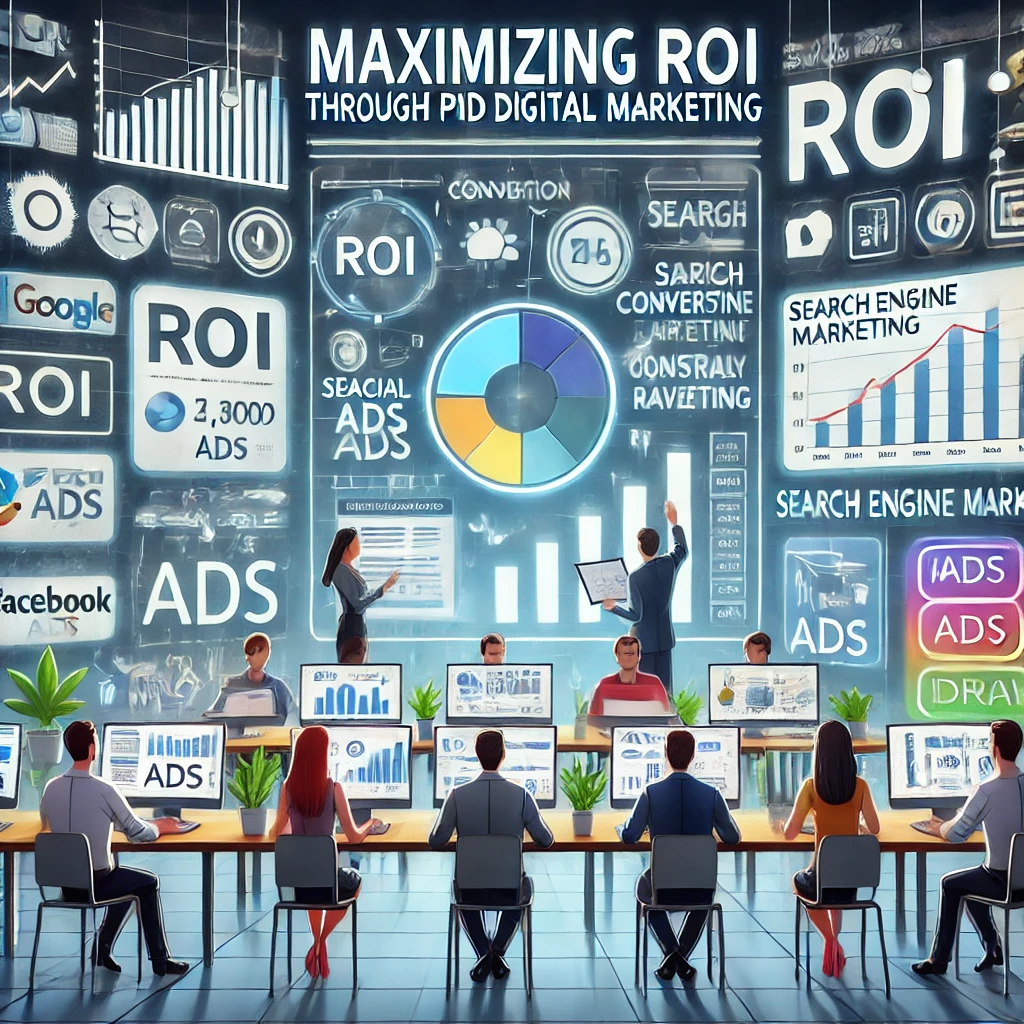Understanding Paid Digital Marketing
In the competitive landscape of digital marketing, paid strategies offer a powerful way to boost your brand’s visibility, drive traffic, and achieve your business goals. Unlike organic marketing, paid digital marketing provides immediate results and precise targeting, making it an essential component of any comprehensive marketing plan. In this blog post, we’ll explore the various facets of paid digital marketing and offer practical tips to help you maximize your return on investment (ROI).
Paid digital marketing involves spending money on advertising to promote your products or services online. The primary goal is to reach a larger audience, generate leads, and drive conversions. Common forms of paid digital marketing include pay-per-click (PPC) advertising, social media ads, display ads, and sponsored content.

Key Components of Paid Digital Marketing
- Pay-Per-Click (PPC) Advertising:
PPC advertising allows you to place ads on search engines like Google and Bing. You pay a fee each time someone clicks on your ad. PPC is highly effective because it targets users actively searching for keywords related to your business. - Social Media Advertising:
Platforms like Facebook, Instagram, Twitter, LinkedIn, and Pinterest offer robust advertising options. Social media ads can be highly targeted based on demographics, interests, and behaviors, ensuring your message reaches the right audience. - Display Advertising:
Display ads are visual ads that appear on websites, apps, and social media platforms. They can be in the form of banners, videos, or interactive content. Display ads are great for building brand awareness and retargeting previous visitors to your site. - Sponsored Content:
Sponsored content involves partnering with influencers or publishers to create and distribute content that promotes your brand. This can include blog posts, videos, or social media posts. Sponsored content blends seamlessly with organic content, providing a more authentic user experience.
Strategies for Success in Paid Digital Marketing
- Set Clear Goals:
Begin by defining your objectives. Whether it’s increasing website traffic, generating leads, or boosting sales, having clear goals will help you design effective campaigns and measure success accurately. - Understand Your Audience:
Conduct thorough research to understand your target audience’s preferences, behaviors, and pain points. Use this information to create targeted ads that resonate with them. - Choose the Right Platforms:
Select the advertising platforms that align with your audience and goals. For example, if you’re targeting professionals, LinkedIn might be more effective than Instagram. - Create Compelling Ad Copy and Visuals:
Your ads should be attention-grabbing and relevant. Use high-quality images or videos, and craft compelling ad copy that includes a clear call to action (CTA). A/B testing different versions can help determine what works best. - Utilize Targeting Options:
Take advantage of the advanced targeting options available on most advertising platforms. Segment your audience based on location, age, gender, interests, and behaviors to ensure your ads reach the most relevant users. - Monitor and Optimize Campaigns:
Regularly monitor your ad performance using analytics tools. Track key metrics such as click-through rates (CTR), conversion rates, and cost per acquisition (CPA). Use this data to optimize your campaigns, adjusting bids, targeting, and creative elements as needed. - Retargeting:
Implement retargeting campaigns to re-engage users who have previously interacted with your brand but haven’t converted. Retargeting ads can remind them of your offerings and encourage them to take action. - Budget Wisely:
Allocate your budget based on your goals and the platforms you’re using. Start with smaller budgets and scale up as you see positive results. Ensure you have a good mix of short-term and long-term campaigns. - Leverage Analytics and Reporting:
Use analytics tools provided by advertising platforms to gain insights into your campaign performance. Create detailed reports to track ROI and identify areas for improvement. - Stay Updated on Trends:
Digital marketing trends evolve rapidly. Stay informed about the latest developments and best practices in paid advertising. Follow industry blogs, attend webinars, and participate in online forums to keep your strategies current.
Conclusion
Paid digital marketing is a powerful tool for driving immediate results and achieving your business objectives. By understanding the key components and implementing effective strategies, you can maximize your ROI and make the most of your advertising budget. Remember, successful paid digital marketing requires continuous monitoring, optimization, and adaptation. Stay focused on your goals, understand your audience, and leverage data-driven insights to refine your approach.
Embrace the potential of paid digital marketing and watch your brand reach new heights in the digital landscape!